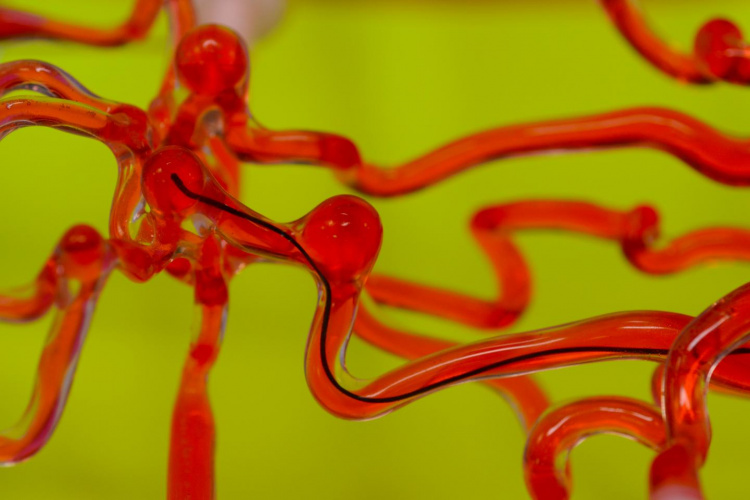
Snake robots are among the most familiar type of mechanical device for working in confined spaces. Flexible, tubular robots have been used for applications such as working in the interior of nuclear reactors, water distribution systems and inside the human body to aid surgery. The MIT team, mechanical engineers affiliated to the institution’s Institute for Soldier Nanotechnologies, have downsized the snake paradigm to the scale of a thread half a millimetre in diameter, which can be remotely controlled by magnetic fields to worm its way through the convoluted blood vessels of the brain to deliver clot-busting drugs or devices to break up and remove the blockage. Such robots have the potential to quickly treat a stroke and prevent damage to the brain, the team claims.
______________________________________________________
Further reading
Robotic arms could give surgeons a hand in future spinal surgery
Rolls-Royce robots promise maintenance revolution
_______________________________________________________
Acute strokes can be treated within 90 minutes of onset, greatly increasing the patient's chance of survival and of recovery. Currently, specialist surgeons will often do this using an endoscopic technique, inserting a narrow wire into arteries in the leg or groin and guiding its tip to the stroke site by pushing and rotating, with the help of live X-ray imaging. They will then thread a catheter along the wire to treat the blockage. This is a physically taxing procedure for the surgeon, who is also exposed to X-rays throughout the operation. Transferring the task to a remotely controlled robot would be both physically easier, and allow the surgeon to carry out the procedure from a safe space. Moreover, it would not require the same degree of expertise from the surgeon.
"It's a demanding skill, and there are simply not enough surgeons for the patients, especially in suburban or rural areas," said lead researcher Yoonho Kim.
Kim and fellow researcher Xuanhe Zhao combined expertise in hydrogels and 3D-printed magnetically actuated materials to design the thread robot. Its core is made of an alloy called nitinol, a nickel-titanium combination that returns to its original shape when bent, coated with a rubbery ink into which magnetic particles were embedded. The whole assembly was then coated with a biocompatible hydrogel to allow it to slide freely inside blood vessels. A large magnet causes the device to convolute, allowing it to weave its way through and past obstacles.
The team has not yet tested the robot in vivo, but produced a silicone replica of the blood vessel structure of a real brain using CT scans, incorporating features such as simulated clots and aneurysms, and filled with a liquid of similar viscosity to blood. They describe this robot experiment in a paper in Science Robotics, showing how they manipulated a large magnet outside the model to steer the thread to its target. It also describes a further experiment where the nitinol wire was replaced by an optical fibre along which a laser could be shone to break up clots.
Looking forward, the team envisages devices manipulating pairs of large magnets outside the patient's body, controlled by a surgeon from a remote location, well away from the X-ray fluoroscope that is imaging the patient's brain.
"Existing platforms could apply magnetic field and do the fluoroscopy procedure at the same time to the patient, and the doctor could be in the other room, or even in a different city, controlling the magnetic field with a joystick," Kim said. "Our hope is to leverage existing technologies to test our robotic thread in vivo in the next step."




Labour pledge to tackle four key barriers in UK energy transition
I'm all for clarity and would welcome anyone who can enlighten me about what Labour's plans are for the size and scale of this Great British Energy....